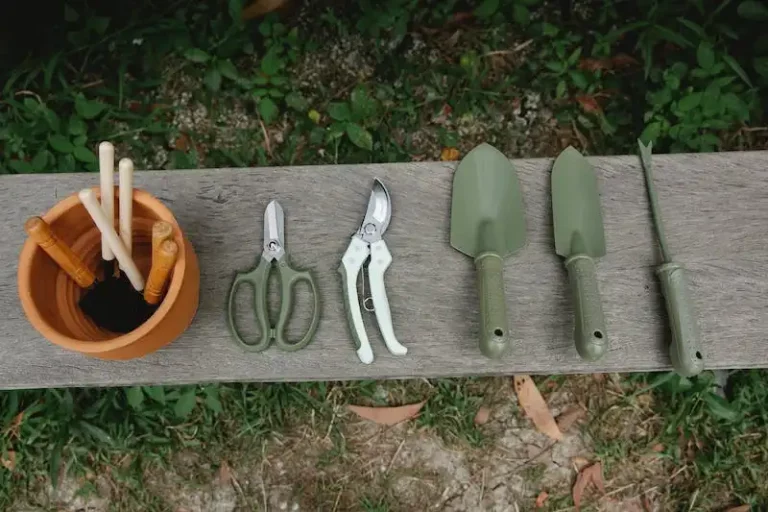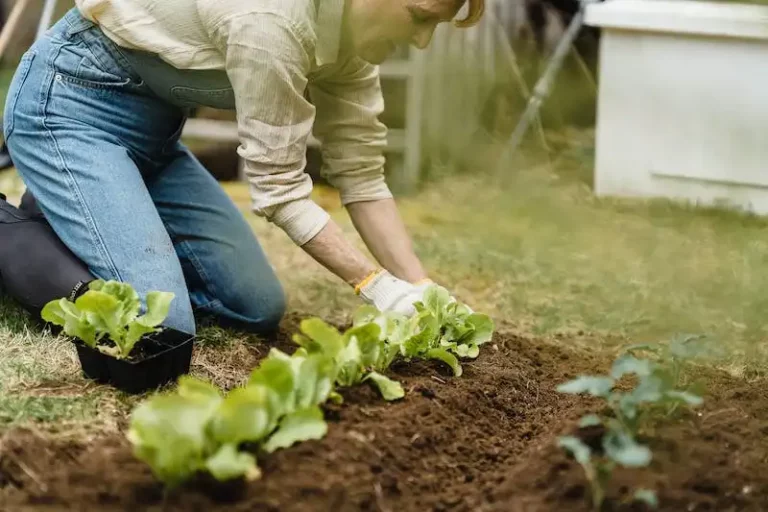Sweet peas are a popular flower to plant in gardens and they are known for their beautiful and fragrant flowers. These legumes have been a favorite amongst gardeners for centuries. If you haven’t tried growing your own, you’re missing out!
Planting sweet peas is easy and can be done directly outdoors in early spring or started indoors a few weeks before. The seeds should be sown deep, about an inch or two, in a well-drained and sunny place. Sweet peas grow best in full sun, so make sure to choose a spot in your garden where they will receive plenty of sunlight.
If you choose to start your sweet peas indoors, you can sow the seeds in pots or trays on a windowsill. Wait until the weather gets a bit cooler before planting the seedlings outside. When planting outdoors, make sure to provide support for the plants with a trellis or netting to help them grow tall and keep them from falling over.
It’s important to water sweet peas regularly, especially during dry spells, and mulching around the base of the plants can help retain moisture. Sweet peas are heavy feeders, so applying a balanced fertilizer or well-rotted manure in spring will help them grow and flower to their full potential.
Once sweet peas start flowering, you’ll be rewarded with an abundance of colorful and fragrant flowers. You can cut the flowers and bring them indoors to enjoy their scent, or leave them in the garden to admire. Sweet peas are a treat for the senses!
In colder climates, sweet peas can be sown in late summer or early fall for blooming the following spring. They can also be started from cuttings if you have access to established sweet pea plants. With proper care and attention, sweet peas will continue to flower all summer long.
To sum it up, sweet peas are a great addition to any garden. Their beautiful flowers and sweet fragrance make them a favorite amongst gardeners. Whether you choose to plant them directly from seeds or start them indoors, you’ll be amazed at how quickly they grow. Just make sure to provide them with a well-drained and sunny spot, and don’t forget to offer some support for their climbing vines. These tips will help ensure that your sweet peas thrive and blossom into a stunning display.
How to Take Sweet Pea Cuttings
Sweet peas are beautiful and fragrant flowers that many people love to grow in their gardens. While they can be grown from seeds, taking cuttings from established plants can be a quicker and easier way to propagate more sweet peas. Here’s how you can take sweet pea cuttings:
| Step 1: | Before taking cuttings, make sure the plants themselves are healthy and robust. Choose plants that have reached a height of at least 6 inches and have multiple sets of true leaves. |
| Step 2: | Before choosing the stems to take cuttings from, scarify them by gently scraping the outer layer with a nail file or sharp knife. This will help the cuttings root more easily. |
| Step 3: | Potting mix or a well-drained soil mixed with peat moss is a great medium for the cuttings. Fill small containers with this mixture and make sure they’re fully saturated with water. |
| Step 4: | Choose stem sections that are about 3 to 4 inches long and remove the lower leaves. Dip the ends of the stems in rooting hormone to encourage root growth. |
| Step 5: | Make a small trench in the potting mix or soil where the cuttings will be planted. Space the cuttings about 2 inches apart. |
| Step 6: | Plant the cuttings in the trench, making sure to bury them deep enough so that only the top set of leaves is exposed. Firmly press the soil around the stems. |
| Step 7: | Water the cuttings thoroughly and place the containers in a location where they’ll receive full sun. In colder climates, you can also protect them with a netting or greenhouse cover. |
| Step 8: | Keep the cuttings well-watered and make sure they don’t dry out. Within a few weeks, you should start to see new growth. |
| Step 9: | Once the cuttings have sprouted and are about 4 to 6 inches tall, they can be planted directly into the garden or larger containers. |
| Step 10: | Make sure to provide plenty of support for the growing sweet peas, such as stakes or a trellis, as they can become quite tall and need something to climb against. |
| Step 11: | Water the plants regularly and feed them with a balanced liquid fertilizer every 2 to 3 weeks to promote flowering. |
| Step 12: | Enjoy the beautiful and fragrant flowers of your sweet peas! |
Taking sweet pea cuttings is a great way to increase your stock of these lovely flowers. By following this guide, you can easily propagate new plants and share them with friends and fellow gardeners. Happy growing!
1 Choose Your Sweet Pea Seedlings
Before you start growing sweet peas, you need to choose your seedlings. Sweet peas are a popular and sweet-smelling annual flower that develops lovely blooms in various colors. Here are some tips to help you choose the right seedlings for your garden:
– Look for healthy seedlings that have a vibrant and sturdy appearance. Avoid seedlings that look weak or wilted.
– Choose seedlings that are labeled as “sweet peas” or “Lathyrus odoratus” to ensure you’re getting the right variety.
– If possible, choose seedlings that have been grown in pots instead of bare root plants. Potted sweet pea seedlings tend to have stronger root systems and better adaptability.
– Consider purchasing seedlings from reputable growers or nurseries, as they often provide high-quality plants.
– If you can’t find seedlings, you can also grow sweet peas from seeds. Soak the seeds overnight before planting them to speed up the germination process. Scarify the seeds by gently nicking them with a file or sandpaper to help with the seed coat’s breaking. Place the seeds about an inch deep into well-drained soil in a sunny spot.
– Sweet pea seedlings should be planted in early spring, around March or April, after the frost has passed. They prefer full sun but can tolerate partial shade.
– When planting, make sure to provide enough space between seedlings, around 4 to 6 inches apart. If you’re planting in rows, dig a trench and place the seedlings in it, making sure to cover the roots with soil.
– Sweet peas like rich soil, so you can improve the soil quality by adding organic matter like compost or well-rotted manure to the planting area.
– Once your sweet pea seedlings are planted, water them well but avoid overwatering. Let the soil dry out slightly between waterings to prevent root rot.
– To protect your growing sweet peas from pests, you can use netting or a trellis to support them as they grow. This will also help prevent the plants from falling over or getting damaged by heavy winds.
– Sweet peas tend to have a long growing period, so regular fertilizing is important. Use a liquid fertilizer specifically formulated for flowering plants, following the instructions on the package.
– In colder climates, you can start sweet pea seedlings indoors on a windowsill or in containers. This will allow you to extend the growing season and increase the chances of blooming.
By choosing the right sweet pea seedlings and providing them with the proper care and growing conditions, you can enjoy beautiful and fragrant blooms in your garden.
2. Make Your Cuttings
To start growing sweet peas, you need to take care of their cuttings. Here’s a guide on how to do it:
- Choose containers that are about four inches deep and fill them with well-drained, rich soil.
- Start by soaking the seeds in water for a few hours or overnight before sowing them.
- Take some cuttings of the sweet pea plants, making sure to include the tips for best results.
- If you have peat pots or biodegradable containers, you can use them to plant your sweet peas directly. Otherwise, transplant them once they have grown a few inches tall.
- Space the cuttings or transplants at least six inches apart, as sweet peas need plenty of room to grow and support themselves.
- Provide proper support for your sweet peas by setting up a trellis, netting, or other suitable structure for them to climb. This is particularly important if you have chosen a vining variety.
- If you’re planting outdoors, make sure to choose a location where the seeds or cuttings will get plenty of sunlight. Sweet peas prefer full sun to partial shade.
- Water the sweet peas thoroughly after planting, making sure the soil is moist but not waterlogged. Wait until the top inch of soil dries out before watering again.
- Wait until the weather has warmed up and the danger of frost has passed before planting sweet peas outdoors. In cooler climates, you can start them indoors and then transplant them outside once the weather is more favorable.
- Mulching around your sweet peas can help retain moisture and suppress weeds. Use organic mulch like straw or compost for best results.
- Sweet peas are legumes and benefit from rich, well-drained soil. Prior to planting, mix in plenty of organic matter such as compost or well-rotted manure.
- Once the sweet peas start growing, make sure to provide support and train them to climb the trellis or netting. You can use garden twine or strips of fabric to gently tie the stems to the support structure.
- Sweet peas are known for their fragrance, so consider planting them near windowsills or outdoor seating areas where you can enjoy their scent.
- Flowering usually starts about three months after planting the seeds or cuttings, so be patient. Once they start flowering, you can enjoy their beautiful blooms for a long time.
Follow this guide and soon you’ll have beautiful and fragrant sweet peas growing in your garden!



